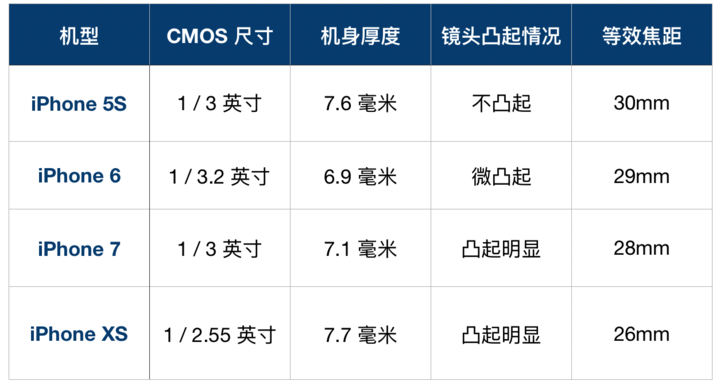Sams earlier this month, Samsung released the 100-megapixel camera sensor (CMOS) ISOCELL Bright HMX, the world’s first product to break through tens of millions of pixels, and Samsung’s 64 million pixels The second high-pixel CMOS introduced by ISOCELL Bright GW1 in conjunction with Redmi.
Although this product has not been officially applied, it has become Xiaomi and Redmi’s external publicity, “Millet’s first 100 million-pixel ultra-clear camera” is like the “price-performance ratio” of the year, and it is placed on the cover map of each media.
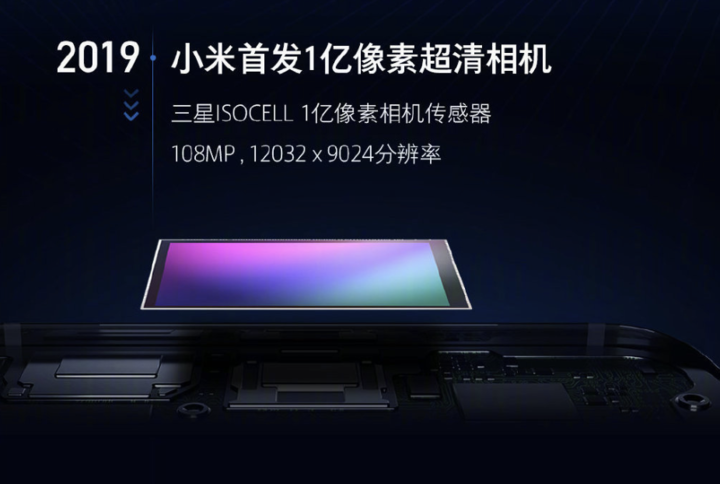
Looking back, the camera function of smartphones has been from 300,000 pixels in the past to 108 million pixels today. In the 15 years that are not too long and not too short, they have been turned over 360 times.
In the past 15 years, mobile networks have driven Internet services and apps The growth, the development of online social apps, also makes photography become one of the main functions of the public to share life, and more users will use the camera’s annotation to measure the quality of the phone.
You may ask them “Are you choosing a camera or a mobile phone?” “They will always answer “It’s always true that the pixels are selected once and for all.”

But after rational thinking, is there a real value in the high-pixel camera of the phone? ? How do you increase the pixel shape and how does it affect the shape change of mobile phones? In fact, today, with 48 million and 64 million pixels, we already have our own answers.
The current high pixel, marketing significance is greater than real intention
If you ask me, buy a mobile phone with 48 million pixels or 12 million pixels. Ok, I will definitely not hesitate to answer your choice of 48 million pixels. However, I will add the following sentence, “In fact, it is still 12 million pixels of output every day.”
Red Rice Note 7 and Glory V20 are the first to use 48 megapixel CMOS The two phones, which use the high-pixel sensors of Sony and Samsung respectively. On the book parameters, the two CMOS can bring up to 4 times more pixels than the conventional 12 megapixel CMOS.

In the previous test, we can see that whether the IMX586 is out of 48 million or the interpolated GM1, their proofs can be more detailed than 12 million pixels after zooming in 100%, and the details displayed are also More, the conclusions are also verified that the high pixel can give the picture a fine degreeBringing double improvement.

▲ 12 million pixels and 48 million pixels to enlarge the contrast sample
How many photos of the 48 megapixel mobile phone are 48 million? ? Not necessarily. Although CMOS theoretically supports high-pixel shooting, the actual shooting of a photo requires a series of pipeline operations, such as SoC, ISP processor, memory, and memory chip, so that the scene in front of the camera can be completely preserved. In order to reduce the pressure on the phone when processing photos, the daily mode is actually 12 million pixels.
So, it’s not rigorous to judge the quality of mobile phone photos by pixel alone.
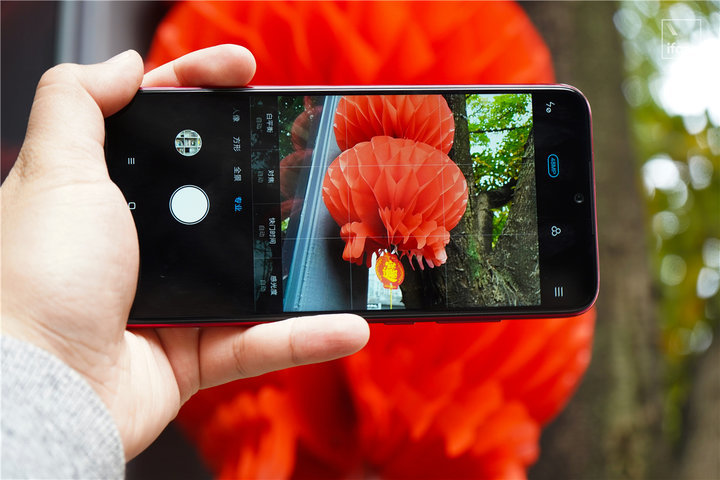
For example, in the same configuration, a flagship phone is shot and processed. A 12-megapixel photo takes about 0.5 seconds. However, it takes 1-2 seconds to take a picture of a 48 megapixel interpolation.
Because the processor needs to handle more than 12 million pixels, and also To store larger volumes of data and consume more power.

With Redmi K20 Pro as an example, the 12-megapixel photo size is 4.7 MB, and 48 million The pixel reached 12.5 MB. At the same time, the time taken from the shooting to the completion of each photo has been almost negligible and increased to 0.5 seconds, which is only the performance of the Snapdragon 855 + IMX586. If it is a mid-range processor, the processing takes 1 second or More.
In addition, the camera cannot be zoomed or connected after the high pixel mode is turned on. Shooting, at this time the actual function of the camera, in addition to playing a chicken blood to take a high-definition photo, other functions can only wait for you to adjust the camera to “daily mode” of 12 million pixels will return to normal.

So, after the camera production and user experience, the manufacturer finally compromised By. Although the camera can support 48 million shots on the hardware level, it is still the user’s optional feature at the software level. The main pixel is still 48 million divided by 4, which is 12 million after four in one.
So, is it meaningful for mobile phone manufacturers to pursue high-pixel CMOS? Of course, at least in the camera experience, it can Give you more shooting details. Even zoom in and out, you can keep clear details.

But the benefits it brings are actually more than the practical level of marketing of. Limited by the limitations of mobile networks and App platforms, images need to be compressed before they can be uploaded. The compression mechanism in the app will eventually compress the images and then conveniently send them on the mobile network.
For example, when I send a 13MB, 8000 x on Weibo In the case of a 6000-size image, this image can be compressed to a 162KB 1440 x 1080 format without the click of the original image. Although the main outline of the object can be displayed, the details are far worse than the original image. Clear.

But from the perspective of the manufacturer, the first camera system with an exaggerated parameter is introduced. The impact is always better than the experience of which game is optimized. The standard line for most users to pursue performance is “fluency”, but the pursuit of camera pixels is endless.
After all, the visual pixels of the human eye About 576 million, want to keep the complete view of the eyes, 100 million pixels is just It’s just the beginning.
The bottom is still the truth, this year mainly Is on the pixel level
TechnologyThe circle has been circulated since ancient times, called “the bottom of the first level of crushing people”, even if the parameters are higher, CMOS is not big enough, this CMOS is a younger brother.
Compared with the use of pixel values for the pleasure of the outside, the expert will see CMOS The bottom is like a driver looking at the car to see the engine, the old editor always loves which keyboard to choose.

The “bottom” here refers to the CMOS photosensitive area. It is like a bowl. The bigger the bowl, the more rice (pixels) it can hold.
The current 48 megapixel CMOS is mainly Sony IMX586 and Samsung GM1, they are all 1 / 2 inch design.
After the 64-megapixel ISOCELL Bright GW1 is 1 / 1.7, recently Samsung The released 100 million pixel ISOCELL Bright HMX uses 1 / 1.33.
If you put these three CMOS together, it is arranged like this:
1 / 2 inch (48 million) < 1 / 1.7 inch (64 million ) < 1 / 1.33 inches (108 million)
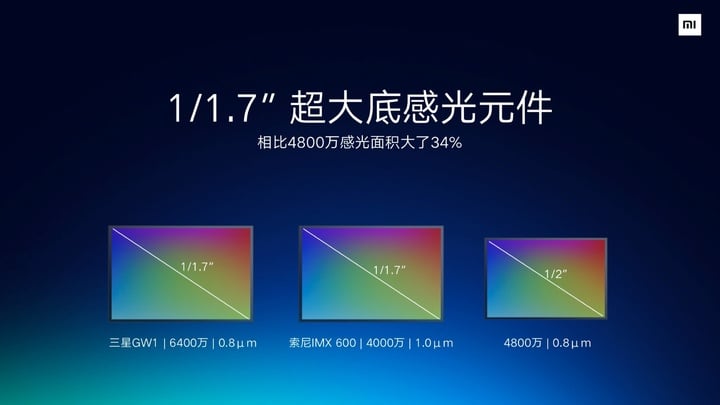
When we put these three high-pixel CMOS together, we are actually not It is difficult to see that the size of the sensor increases as the pixel increases. One message that I have not listed in this arrangement is that the individual pixel areas of these high-pixel CMOS are 0.8μm.
That is, under the same pixel area, the bigger the bottom You can put in more pixels, just like using a bowl of rice, the bigger the bowl will hold more rice.
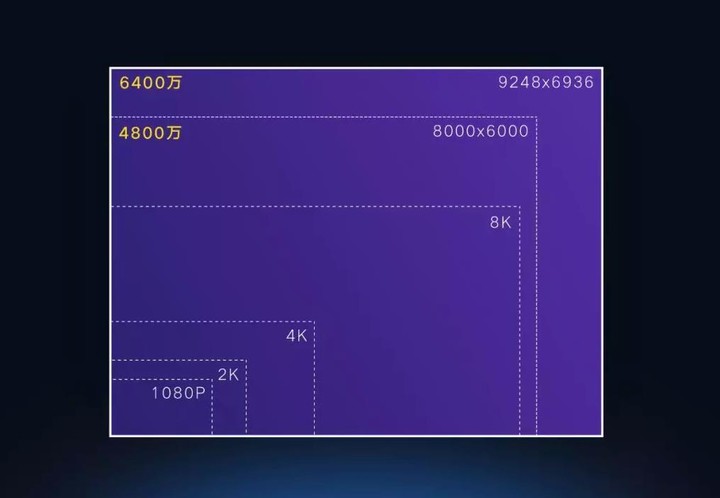
Of course, the larger the CMOS size, the more “pixels” and “larger” pixels can be loaded. Compared to the previous CMOS designs, larger pixels can bring high light input.
Huawei and Sony’s custom IMX600 is a good example of this CMOS Although the volume is the same as GW1 of 1 / 1.7, but the single pixel area is 1μm, in exchange for better dark light imaging performance.
So the big one is equal to the possibility that it will be more, high The clear performance of the pixel, the dark light performance brought by a large area of a single pixel. It’s like a mobile phone’s SoC, which means it’s more capable.
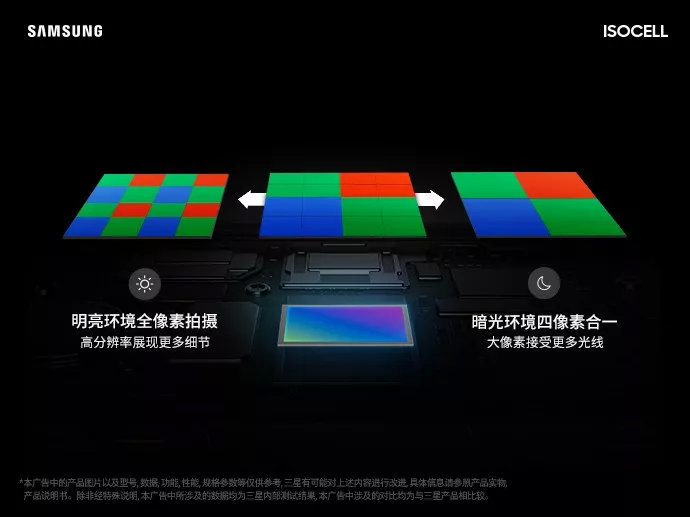
actuallyIn a single pixel area of 0.8μm, 64-megapixel and 100-megapixel CMOS can also enhance the dimming capability through four-in-one pixel synthesis.
For example, 64 million pixels can synthesize a 16 million pixel photo, 100 million The pixel can synthesize a picture of 27 million pixels, and synthesize a large pixel of 1.6μm through four small pixels, so as to fill the light amount of 0.8μm in a single pixel area with pixels.
So, even on mobile phones, the number of pixels has evolved from 300,000 to 100 million. Today, “the bottom of the first level of crushing people” is still the eternal truth of CMOS design.
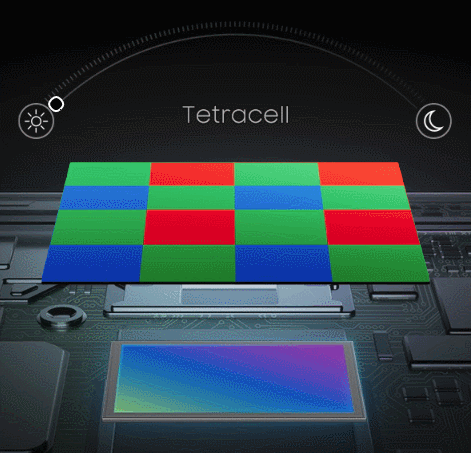
▲ Tetracell pixel synthesis principle
The 1 / 1.33 inch base contains 108 million 0.8μm pixels. In specialModes can be detailed in detail than any CMOS.
In normal mode, 108 million pixels are only 27 million after synthesis. However, it is still the highest value of all current mainstream mobile CMOS, and the amount of light entering a single group of pixels is also improved by a grade.
In general, the current larger CMOS size means More pixels are mounted; more pixels mean more compositing space; larger compositing space is equivalent to improving the performance of dark light while maintaining the performance of the synthesized pixels.
But I don’t think GW1 or 100 megapixel HMX will be the future flagship The mainstream configuration of mobile phones. Although their pixel values are high, mainstream manufacturers prefer to customize CMOS. This is whether Apple, Samsung or Huawei have played their best in the past flagship products.
The production of the flagship mobile phone must represent the top level and characteristics of the brand, and here It must be implemented by custom CMOS.
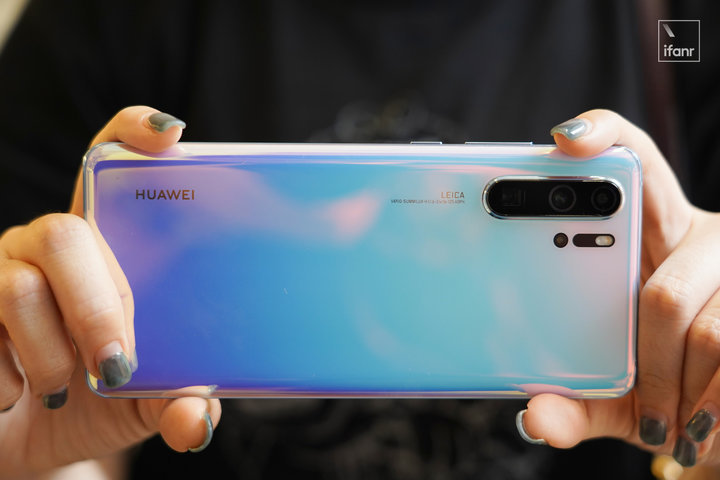
But customizing a CMOS is not easy or cheap. According to the previously published information by financial services company Cowen, the cost price of an IMX600 is $300 compared to “public” The version of the IMX586, the cost price is 180 yuan, only 60% of the former price.
So high-pixel sensors such as ISOCELL Bright GW1, HMX are more It is used in mid-to-high-end products, which exchanges more light into the high-pixel, and takes into account high-pixel photography to achieve a close to the custom CMOS.
How high-pixel cameras affect mobile phone form
The Nokia 808 is my most impressive high-pixel camera phone. It comes in a CMOS size of 1 / 1.2, and if the CMOS is still there, it will be larger than the 100 million pixel HMX.
But in this 1 / 1.2 inch space, there are only 41 million pixels Point, so the area of each pixel can reach 1.4μm, CMOS sensibilityIt was an exaggeration at the time.

▲ Image from: Softpedia
At the same time, the high pixel feature also brought “lossless” to Nokia 808 Additional features of Zoom. The high-pixel image quality still provides a standard 5 megapixel level of image output after cropping, which enables the “zoom” function of the mobile phone.
In a nutshell, with only one camera, the Nokia 808 uses 41 million pixels in exchange for most of the phones at the time. The lossless zoom that can’t be done is actually similar to today’s high-pixel photos.
However, the biggest problem with the Nokia 808 is that it makes the rear camera a lot. The “Oreo” rear camera is really much bigger than the rear camera of other mobile phones.
The reason here is actually very well explained. Like a camera, when you use a sensor with a larger area, the area that the lens needs to cover becomes larger. If you want the lens to cover a larger area, the size of the lens will inevitably become larger.
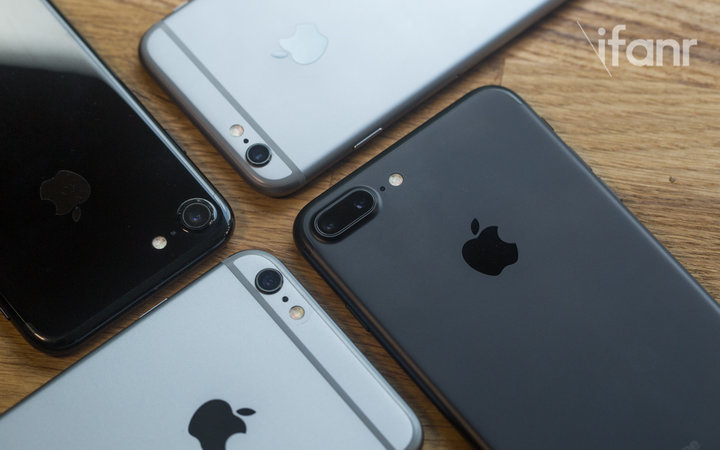
This rule can also be seen from the rear lens changes of the iPhone 5s, iPhone 6, and iPhone 7. As the body becomes thinner and the CMOS size becomes larger, the degree of camera bulging becomes more and more Obvious:
As you can see from the chart, during the evolution of the iPhone 5S to iPhone XS, the lens area has become more and more obvious as the sensor area has increased. With the same 1/3-inch CMOS, the iPhone 7 uses a 28mm lens with a wider viewing angle. The lens is larger than the 30mm lens of the iPhone 5S, and the convex portion of the lens is naturally more obvious.
Obviously, the oversized CMOS does not match the thinner the phone Design requirements.
But in the mobile phone circle, Samsung is ancestral 1 / 2.55 inches CMOS has become a clear stream in the circle. Starting with the Galaxy S7 Edge in 2016 and the Galaxy Note 10 released this month, Samsung still has the 1 / 2.55-inch sensor for the flagship.
It can be said that the model of the running water is the bottom of the iron. It can be said that it is constantly changing.
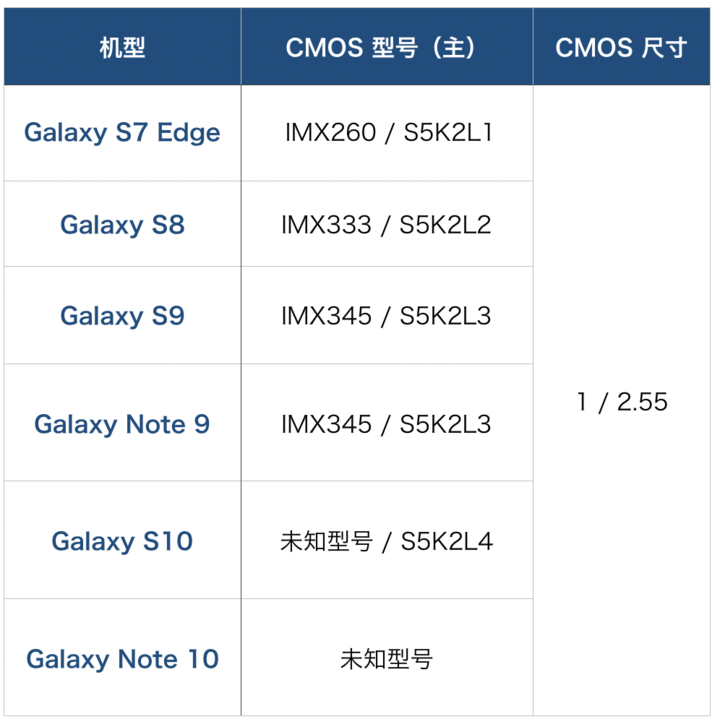
1 / 2.55 inch ancestral specifications will not be enough? The facts tell us that this is not the case. Although Samsung has been using this specification of CMOS, the module configuration and algorithm adjustment has been changing, variable aperture, AI late, multi-shot…
So even in the past 4 years, Samsung has been using 1 / 2.55 inches CMOS, but this year’s Note 10+ can still reach the crown of DxOMark, and the thickness of the fuselage is controlled at 7.9 mm. In fact, it is one of the “results” of insisting on polishing this CMOS.
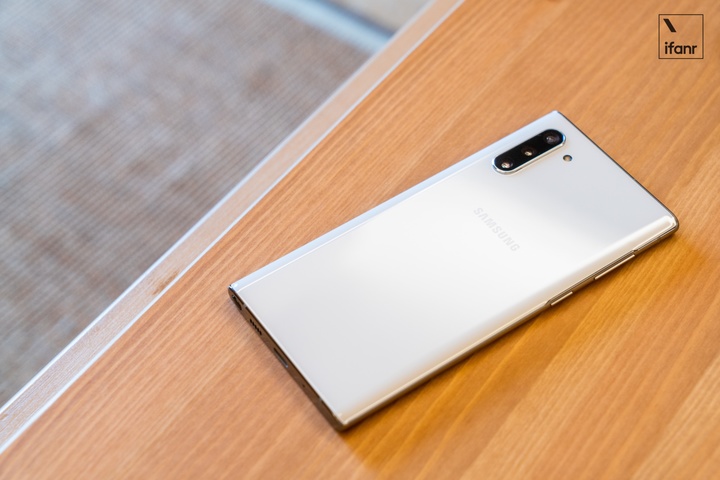
However, Samsung intends to continue to use 1 / 2.55 inches? That may not be the case.
1 / 2.55 inch CMOS has evolved over the past 4 years of use At the end, even in terms of perception, it can still maintain the top level, but the CMOS with a 40-megapixel start on the parameters does not have much advantage. Obviously, it is not conducive to marketing after Samsung in the market.
How to fundamentally increase the hardware quality of the camera, here is to “borrow” 5G hardware makes the phone bigger and thicker. Put a larger CMOS into the phone to get higher pixels, and break the physical barrier of 12 million pixels to improve hardware imaging performance.
reported, Galaxy Note 10 will be Samsung’s last mobile phone with 1 / 2.55 inch CMOS. Samsung’s new flagship will be expected to be equipped with larger CMOS next year.
The days of “Ancestral 1 / 2.55 inches” may be coming to an end.
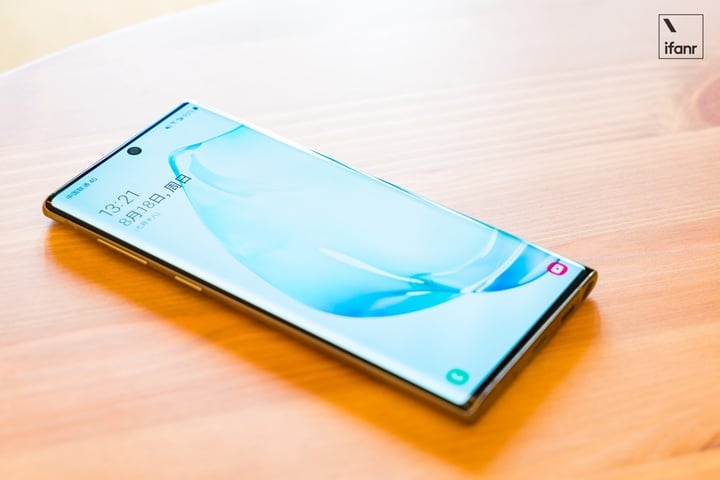
The last thing we can foresee is that in 5G parts and high imagesUnder the influence of CMOS, the smartphone will continue to maintain a thicker (more than 7 mm) or lens raised design. The hardware revolution brought about by high-pixel imaging is the increasingly higher screen resolution, storage space and ISP image processing capabilities.
But in the moment, mobile phone photos will still be dominated by 12 million pixels. After all, it is unrealistic to keep high pixel output in the current hardware conditions .
